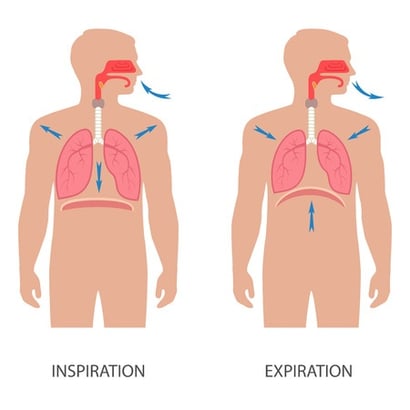
Want a voice with warmth, variety, and power? Follow these four steps for a quality voice that still sounds like it means business!
The human voice is an infinitely flexible instrument, and an unsurpassed tool for conducting business.
You can indeed talk your way to success.
So why does it create so much dissatisfaction in people who depend upon it?
Your voice is your most resourceful communication tool. To speak with power and immediacy, you need to strengthen your vocal delivery. Discover the five essential techniques that will make your voice come vibrantly alive for your listeners. Download my essential cheat sheet, "The 5 Key Tools of Vocal Dynamics."
Part of my practice involves voice and speech improvement for professionals—people who feel their vocal deficiencies are limiting their career. One of these limitations is a lack of vocal power. This is often experienced by soft-spoken people who oversee a team or otherwise speak in leadership positions. They feel their lack of vocal assertiveness is undermining their authority and credibility.
Below is a four-pronged approach that can help in situations like this. Even if you don't suffer from a lack of authority, you can use these techniques to add energy and immediacy to your vocal sound. When you speak about important things, your voice should compel attention. Here are some ways you can get closer to making that happen.
 Start Your Speaking Voice in the Right Place
Start Your Speaking Voice in the Right Place
When it comes to creating a well-supported voice that can carry, you need to start in the right place. That is, not in the throat where the voice box sits, but in your adominal area, i.e., where your diaphragm is situated.
The diaphragm is a dome-shaped muscle that forms the floor of your thoracic cavity and the ceiling of your abdominal cavity. You can clearly see its location in the above illustration. When you inhale ("Inspiration"), the diaphragm flattens and descends, creating room for the lungs to expand. This movement is essential to gaining a full reservoir of air, which you then exhale ("Expiration") in a controlled fashion to excite the vocal folds or "cords". The relative strength of the column of air you exhale is what gives your voice power—not tightening or otherwise straining your vocal cords.
So to speak with more power, get your diaphragm into the act and avoid shallow chest breathing. Here are instructions on how to breathe diaphragmatically for deeper inhalation and vocal power.

How to Add Sound to the Breath
Of course, the fact that you're breathing beneficially won't impress your audiences much. The next key step is to add sound to the breath. What you're aiming for here are two things: (1) That you're consciously using your abdominal area to support your sound, keeping your throat open without tightening; and (2) A sound that is projected outward, rather than staying partly trapped inside you.
Here's a simple way to achieve the characteristic of "forward sound": Begin by humming on a comfortable pitch. Visualize the front of your face as a mask in which the sound is vibrating. You should actually feel some vibration in your face, along with a tingling or ticklish sensation in your lips. If your sound isn't fully directed outward, you won't feel the vibration or tingling.
Once you're producing a hum that's being carried forward, open your mouth to release the sound. The hum will now become a "Maaah" sound. Once again, listen to whether the sound is fully supported and resonant. Does it emerge with sufficient strength? Keep up the vocalized sound until your breath can't support it any longer—don't let it peter out. Now, you have a well supported sound that's assertive yet pleasant. Here's my article on developing a more powerful public speaking voice. And here's my piece on achieving a warmer and more pleasant sound.

Are You a 'Head Voice' or a 'Chest Voice'?
Once you've mastered the fundamentals of diaphragmatic breathing and a resonant sound, it's time to focus on a subtler aspect of your business voice. This involves awareness of whether your voice carries sufficient authority and credibility.
Can a voice be responsible for that impression all by itself? Absolutely. Unfortunately, 21st-century speaking habits mean that many of us aren't accessing the aspects of our vocal sound that help rather than hinder our effectiveness.
Your typical day of sitting at a computer and talking on the phone has removed you from the places where business used to be conducted: the marketplaces, public buildings, factories and fields where we used to work and speak all day to others. Now, our voices don't have to carry, and we've let them lose some of their muscularity. We've become talking heads.
For many people, that results in a "head voice"—a thin vocal sound that literally has no body to it. This voice gives the impression of youth but carries little authority. You can test this yourself right now: Speak out loud while holding one hand on your chest. If you feel no vibration under your hand, chances are you're using a head voice. The opposite exteme is a "chest voice," which has loads of resonance but lacks spontaneity, nimbleness, and sounds old. Keep that hand in place and try to create some balance: Allow the sound down into your chest if you use a head voice; and give it permission to venture upstairs if you're employing only a chest voice.

Bringing It All Back Home: Your Vocal Quality
Let's review: You're breathing diaphragmatically to create some vocal power, and you're using your abdominal area not the throat to project your voice. You're supporting the sound with your breath and sending it forward clearly and cleanly. And you're achieving a balance of sound that resonates in both the head and the chest.
With these fundamentals of voice production under your belt (so to speak), you can add vocal expressiveness to your repertoire for successful business speaking. Nothing equals your voice for power and subtlety in delivering a message. Your voice is almost infinitely flexible in conveying meaning and emotion to listeners. Without conscious and effective use of the voice, whatever you're trying to share with others will be conveyed only in tones of gray, rather than the full vocal palette that's available to you.
Learn how to develop a persuasive voice for business communication, including using inflection, variety, and empathy. And review the 5 key tools of vocal dynamics. You'll reach people in emotionally-based ways that simply aren't possible otherwise. And you'll still sound like you mean business.
You should follow me on Twitter here.



